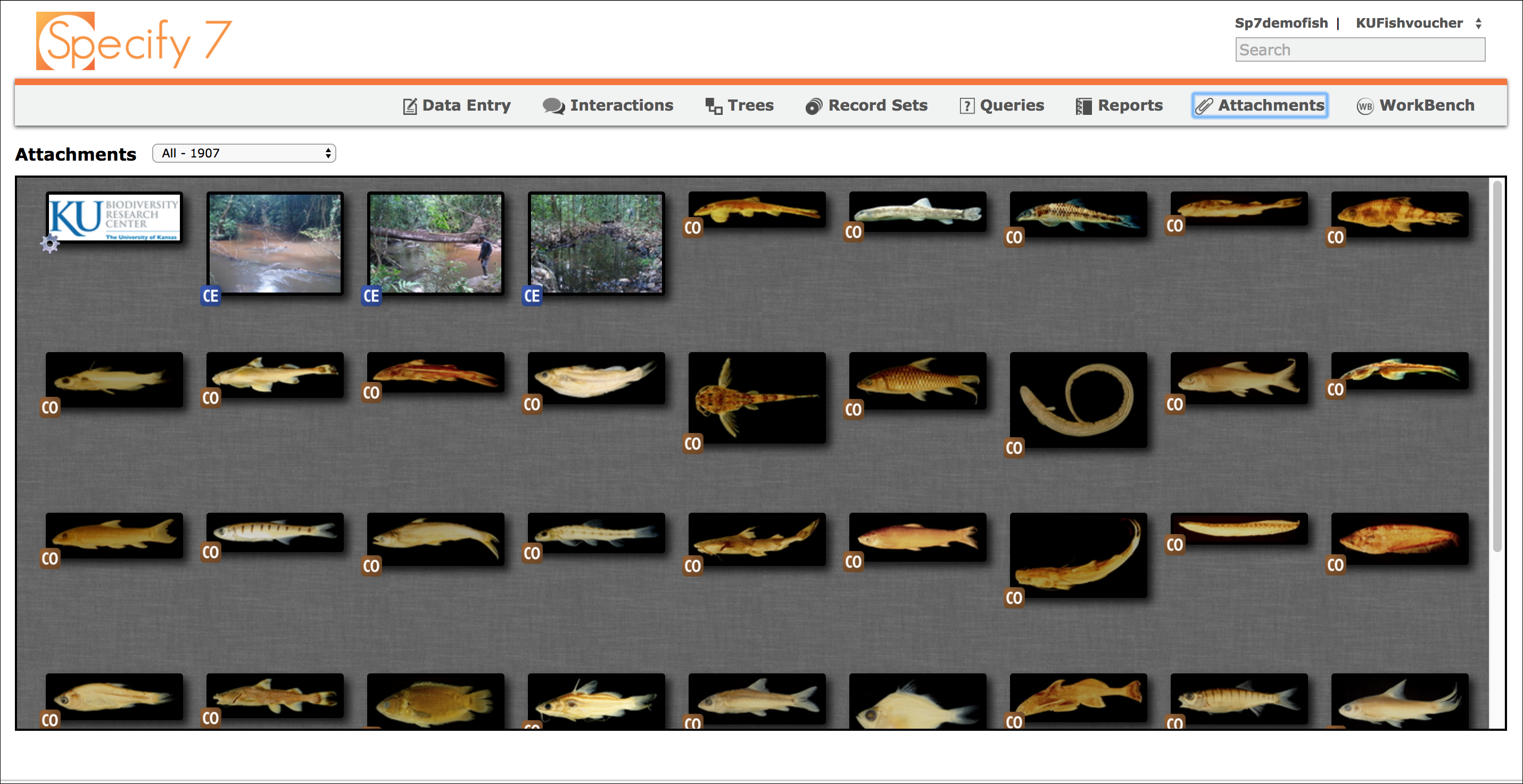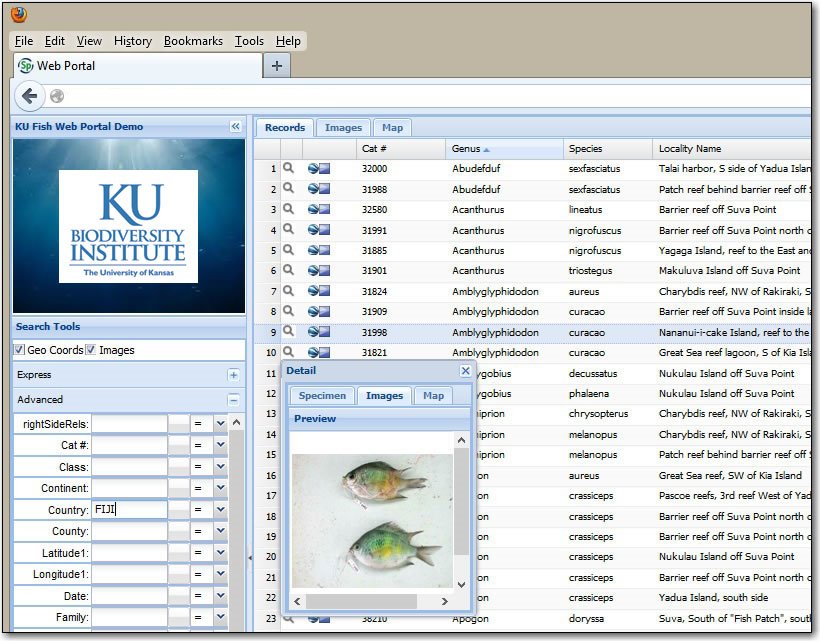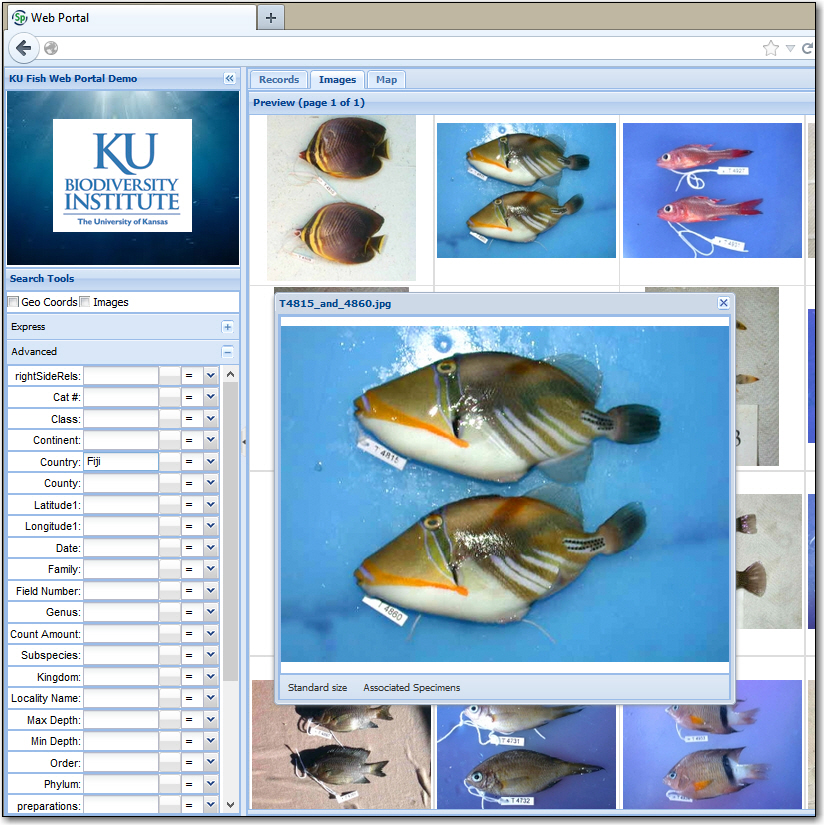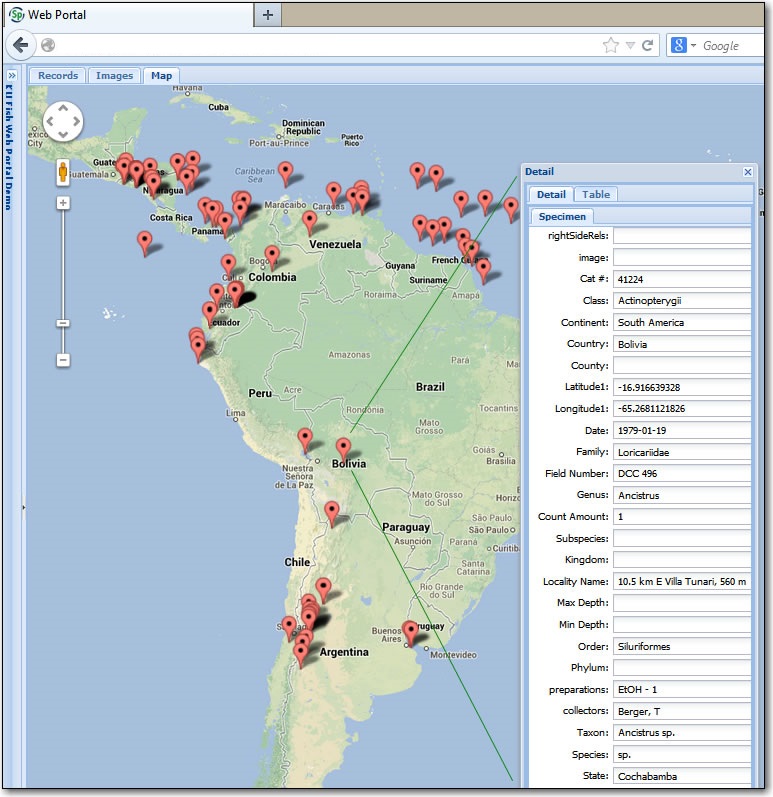Attachment Server
Files and documents linked to Specify data records are not stored within a MySQL or MariaDB database but separately as files accessed within a local filesystem or mounted server directory, or on a server computer running the Specify Attachment Server where files are accessed through web protocols.
The Specify Attachment Server offers a flexible option for storage of collection-data-related images and documents for institutions with multiple collections, a mix of workstation operating systems or those that want to use the Specify Web Portal to publish attachment files to the web. The Attachment Server is an optional module, it handles transactions involving files linked to Specify database records, i.e. uploading, downloading, and deleting attachment files. It is typically installed on an institutional Linux server. The Attachment Server’s Python code is lightweight, it has been tested on Linux but should run on any platform supported by Python. Authentication allows document repository access only from Specify workstations and read-only access from the optional Specify Web Portal. The Attachment Server Python code is available from GitHub. The settings file includes documentation as comments. Installing the Specify Attachment Server requires the services of a systems admin.
Specify Cloud Hosting including an Attachment Server is available with a Solutions membership in the Consortium and is priced based on the amount of storage used: $250 for 5 GB and $500 for 50 GB/yr. There is also modest one-time setup cost. For more information about the Specify Cloud hosting service please contact us at membership at specifysoftware.org.
Web Portal
For collections that need to publish their collections catalog information publicly, the Specify Web Portal is a full-featured web interface for read-only, public access to specimen data and images. It is an optional component of a Specify installation. Working from an exported copy of a Specify collection database, the Web Portal provides full-text indexed searches, structured, and spatial queries of specimen holdings. Express searches are fast, while structured queries allow precise specification of the search scope and support multi-field queries with AND or OR logic. Searches can be qualified to return only records with geo-coordinates or with attached images.
The Specify Web Portal displays specimen information in three views–Records, Images, and Maps. On the “Records” tab specimen data are shown in a traditional grid view. The choice and number of data fields to display in the web interface is determined by each collection, and web users can sort and re-arrange data columns during a session. The search panel is customizable with an institutional logo or brand image, and pages can be embedded into institutional content management systems or web platforms by a web programmer.
The Specify Web Portal is an effective tool for publishing specimen data. Specify’s Schema Mapper and Data Export tools make issuing updates to the web portal from a Specify collection database easy. The Web Portal is intended for institutional web server computers; setup requires the technical expertise of a server admin. Installation information is available on Github: https://github.com/specify/webportal-installer.



